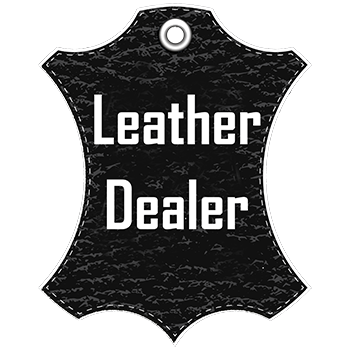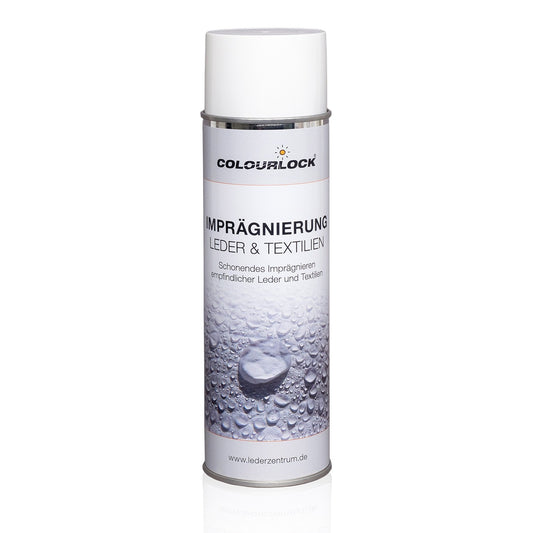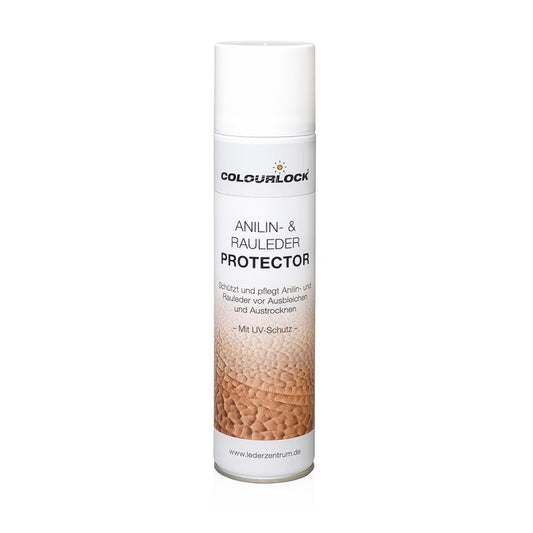Leather care
-
(0)
Regular price From 20,00 €Regular priceUnit price / per(0)
Regular price 24,90 €Regular priceUnit price / per(0)
Leather and fur washing concentrate
Regular price 29,90 €Regular priceUnit price / per(0)
Colourlock leather detergent set
Regular price 39,90 €Regular priceUnit price / perHigh-quality clothing deserves high-quality care, here you will find many other products for the care of leather clothing
Cleaning and care of leather clothing
Leather – the oldest clothing material
Along with fur and wool, leather is one of the oldest clothing materials in the world. It was valued thousands of years ago for its natural properties: leather is tough, relatively waterproof, supple and breathable. Even today, the natural material is not only a popular fashion classic, but also has the reputation of being particularly durable and resilient. In fact, leather clothing is not only impressive for its characteristic look and feel, but above all for one thing: durability.
Cleaning leather clothing
Whether it's a leather jacket, leather pants, leather shirt or leather skirt - a piece of clothing made of high-quality leather can last for several decades. If worn frequently, leather clothing adapts perfectly to your figure and fits comfortably like a second skin. However, careful care is required to ensure that the typical material properties of leather, such as suppleness and durability, are retained for a long time. In order to enjoy your new piece of clothing for as long as possible, you should make sure that you clean and care for leather clothing correctly. We have summarized the most important information for you below.
First things first: leather does not belong in the washing machine! Even though leather is considered indestructible, it would probably not survive a machine wash. Why? Leather is not a textile, but the skin of an animal and therefore an organic, natural material. Just as you would not subject your own skin to a spin cycle and chemicals, you should not do the same with your leather clothing. What could happen when washing leather jackets, leather pants, etc. in the washing machine? The seams in the leather could warp so much that the fit of your garment changes significantly and, in the worst case, you could no longer wear it. The water could wash out natural leather fat, tanning agents and pigments, and make the leather hard and brittle. In addition, chemical substances in detergent attack the top protective layer of the leather, which can reduce the durability of your garment by many years. Depending on the color treatment of the leather, unwanted washing could also occur, which would impair the appearance of your favorite piece. Since damage once done can often not be repaired, care must be taken when washing leather. The good news: In most cases, extensive cleaning of leather is not necessary! Find out what you can do instead to keep your leather clothing clean and well-maintained.
Leather impregnation – simply prevent dirt
We recommend that you waterproof your leather clothing before wearing it for the first time. Treating it with a waterproofing spray is child's play and effectively protects your leather clothing from the effects of the weather. To do this, use a colorless leather waterproofing spray and spray your garment thoroughly from all sides - ideally outdoors. Waterproofing gives the leather water-repellent properties, which greatly reduces the risk of stains. Waterproofing sensitive rough leather, such as suede and nubuck leather, is particularly useful. Moisture and stains no longer penetrate the pores of the leather as quickly, which protects your garment from moisture and dirt. But smooth leather, such as lambskin nappa or cowhide, also benefits from waterproofing: Protected from wind and weather, which would make it hard and brittle in the long term, it remains hard-wearing and supple thanks to waterproofing. The resulting "protective layer" supports the natural barrier function of leather and also makes it easier to remove stains later. You should waterproof your leather garment once or twice a year, depending on use.
Air out leather regularly
Whether it's a night of dancing, a barbecue or a campfire - often it's just a matter of getting an unpleasant smell out of leather jackets, leather pants, etc. In such a case, it's usually enough to let leather clothing air out well. After a few hours in the fresh air, your favorite item will smell like new.
Remove light soiling from leather by hand
To remove light dirt, you can clean your leather clothing easily and gently by hand. Thanks to waterproofing, superficial dirt on smooth leather can often be removed without leaving any residue using a damp cloth (without soap). Cleaning suede and suede can be a little more complicated. If possible, wet stains in suede should be dabbed off immediately after they appear using a handkerchief. There are also tools for cleaning suede clothing such as suede jackets, nubuck leather trousers or suede shirts, such as the suede brush and the leather eraser. Dry stains on suede can be easily removed with a suitable leather brush, for example. Here you should make sure that the bristles of the leather brush are not too hard. You should also avoid scrubbing too hard when brushing out the stains. For removing heavier dirt from suede, we recommend using the leather eraser (often also available in drugstores as a so-called “dirt eraser”). Dirt can be easily erased with this slightly grainy cleaning rubber. A leather eraser is also used to mattify "greasy" areas in suede that have become shiny. These are often pocket openings, collars and cuffs. After treatment with a leather eraser, we recommend removing the abrasion with a brush and - depending on the area treated - refreshing the impregnation.
Washing the lining of leather trousers by hand
Since leather is naturally breathable and moisture-absorbing, you fortunately rarely sweat in leather trousers. If you do ever feel the need to wash your leather trousers, cleaning the inner lining - the part that comes into direct contact with your body - is completely sufficient. This can usually be pulled out of the leather trousers in whole or in part so that you can wash it carefully by hand. To do this, put the trousers in the sink and carefully rinse the inner lining without getting the leather wet. You should make sure to only use lukewarm water and mild detergent. Then let the wet inner lining dry outside the trousers and only pull it back into the trousers once it is completely dry. Tip: Even with tight skirts and dresses, the inner lining can often be pulled out or off the leather.
- Choosing a selection results in a full page refresh.
- Opens in a new window.





